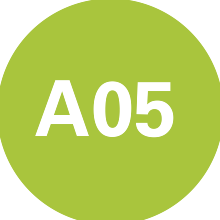People
Rainer Helmig
Christian Rohde
Carina Bringedal (Principal Investigator and Junior Professor from 01.12.2018 until 30.9.2022)
Nadia Skoglund (Alumna)
Carina Bringedal (Since October 2022 full professor at the Western Norway University of Applied Sciences, Bergen NOR)
Publications
Preprints
- Bringedal, C., Kiemle, S., van Duijn, C. J., & Helmig, R. (2025). Impact of saturation on evaporation-driven density instabilities in porous media: mathematical and numerical analysis. In arXiv preprint arXiv:2501.12784. https://doi.org/10.48550/arXiv.2501.12784
Conference Papers
- Bringedal, C. (2020). A Conservative Phase-Field Model for Reactive Transport. In R. Klöfkorn, E. Keilegavlen, F. A. Radu, & J. Fuhrmann (Eds.), Finite Volumes for Complex Applications IX - Methods, Theoretical Aspects, Examples (Vol. 323, pp. 537–545). Springer International Publishing. https://doi.org/10.1007/978-3-030-43651-3_50
Books
- Bringedal, C. (2022). Multiscale modeling and simulation of transport processes in porous media. Habilitation thesis, University of Stuttgart. https://doi.org/10.18419/opus-12829
Journal Articles
- Ghosh, T., Bringedal, C., Rohde, C., & Helmig, R. (2025). A phase-field approach to model evaporation in porous media: Modeling and upscaling. Advances in Water Resources, 199. https://doi.org/10.1016/j.advwatres.2025.104922
- Bringedal, C., & Jaust, A. (2024). Phase-field modeling and effective simulation of non-isothermal reactive transport. Results in Applied Mathematics, 21. https://doi.org/10.1016/j.rinam.2024.100436
- Kelm, M., Bringedal, C., & Flemisch, B. (2024). Upscaling and Effective Behavior for Two-Phase Porous-Medium Flow using a Diffuse Interface Model. Transport in Porous Media, 151, 1849–1886. https://doi.org/10.1007/s11242-024-02097-6
- Schollenberger, T., von Wolff, L., Bringedal, C., Pop, I. S., Rohde, C., & Helmig, R. (2024). Investigation of Different Throat Concepts for Precipitation Processes in Saturated Pore-Network Models. Transport in Porous Media, 151, Article 14. https://doi.org/10.1007/s11242-024-02125-5
- Veyskarami, M., Bringedal, C., & Helmig, R. (2024). Modeling and Analysis of Droplet Evaporation at the Interface of a Coupled Free-Flow-Porous Medium System. Transport in Porous Media, 151. https://doi.org/10.1007/s11242-024-02123-7
- Veyskarami, M., Michalkowski, C., Bringedal, C., & Helmig, R. (2023). Droplet Formation, Growth and Detachment at the Interface of a Coupled Free-Flow-Porous Medium System: A New Model Development and Comparison. Transport in Porous Media, 149. https://doi.org/10.1007/s11242-023-01944-2
- Bringedal, C., Schollenberger, T., Pieters, G. J. M., van Duijn, C. J., & Helmig, R. (2022). Evaporation-Driven Density Instabilities in Saturated Porous Media. Transport in Porous Media, 143, Article 2. https://doi.org/10.1007/s11242-022-01772-w
- Kloker, L. H., & Bringedal, C. (2022). Solution approaches for evaporation-driven density instabilities in a slab of saturated porous media. Physics of Fluids, 34. https://doi.org/10.1063/5.0110129
- Lunowa, S. B., Mascini, A., Bringedal, C., Bultreys, T., Cnudde, V., & Pop, I. S. (2022). Dynamic effects during the capillary rise of fluids in cylindrical tubes. Langmuir, 38, Article 5. https://doi.org/10.1021/acs.langmuir.1c02680
- Michalkowski, C., Veyskarami, M., Bringedal, C., Helmig, R., & Schleper, V. (2022). Two-phase Flow Dynamics at the Interface Between GDL and Gas Distributor Channel Using a Pore-Network Model. Transport in Porous Media, 144, Article 2. https://doi.org/10.1007/s11242-022-01813-4
- Scholz, L., & Bringedal, C. (2022). A Three-Dimensional Homogenization Approach for Effective Heat Transport in Thin Porous Media. Transport in Porous Media, 141, 737–769. https://doi.org/10.1007/s11242-022-01746-y
- Sharmin, S., Bastidas, M., Bringedal, C., & Pop, I. S. (2022). Upscaling a Navier-Stokes-Cahn-Hilliard model for two-phase porous-media flow with solute-dependent surface tension effects. Applicable Analysis, 101, 4171–4193. https://doi.org/10.1080/00036811.2022.2052858
- Ackermann, S., Bringedal, C., & Helmig, R. (2021). Multi-scale three-domain approach for coupling free flow and flow in porous media including droplet-related interface processes. Journal of Computational Physics, 429. https://doi.org/10.1016/j.jcp.2020.109993
- Lunowa, S. B., Bringedal, C., & Pop, I. S. (2021). On an averaged model for immiscible two-phase flow with surface tension and dynamic contact angle in a thin strip. Studies in Applied Mathematics, 147, 84–126. https://doi.org/10.1111/sapm.12376
- Olivares, M. B., Bringedal, C., & Pop, I. S. (2021). A two-scale iterative scheme for a phase-field model for precipitation and dissolution in porous media. Applied Mathematics and Computation, 396. https://doi.org/10.1016/j.amc.2020.125933
- Wagner, A., Eggenweiler, E., Weinhardt, F., Trivedi, Z., Krach, D., Lohrmann, C., Jain, K., Karadimitriou, N., Bringedal, C., Voland, P., Holm, C., Class, H., Steeb, H., & Rybak, I. (2021). Permeability Estimation of Regular Porous Structures: A Benchmark for Comparison of Methods. Transport in Porous Media, 138, 1–23. https://doi.org/10.1007/s11242-021-01586-2
- Bringedal, C., von Wolff, L., & Pop, I. S. (2020). Phase Field Modeling of Precipitation and Dissolution Processes in Porous Media: Upscaling and Numerical Experiments. Multiscale Modeling & Simulation, 18, 1076–1112. https://doi.org/10.1137/19m1239003
- Ghosh, T., Bringedal, C., Helmig, R., & R.Sekhar, G. P. (2020). Upscaled equations for two-phase flow in highly heterogeneous porous media: Varying permeability and porosity. Advances in Water Resources, 145. https://doi.org/10.1016/j.advwatres.2020.103716
- Sharmin, S., Bringedal, C., & Pop, I. S. (2020). On upscaling pore-scale models for two-phase flow with evolving interfaces. Advances in Water Resources, 142. https://doi.org/10.1016/j.advwatres.2020.103646
Published data sets
- Bringedal, C. (2025). Eigenvalue problem solver for evaporation-driven density instabilities in partially saturated porous media [DaRUS]. https://doi.org/10.18419/DARUS-4711
- Bringedal, C. (2025). Netgen/NGSolve code for pore-resolved simulations for: Local Thermal Non-Equilibrium Models in Porous Media: A Comparative Study of Conduction effects [DaRUS]. https://doi.org/10.18419/DARUS-4771
- Kiemle, S. (2024). DuMuX code for modelling evaporation-driven density instabilities in unsaturated porous media [DaRUS]. https://doi.org/10.18419/DARUS-4610
- Bringedal, C., Pieters, G. J. M., & van Duijn, C. J. (2022). Eigenvalue problem solver for evaporation-driven density instabilities in saturated porous media [DaRUS]. https://doi.org/10.18419/DARUS-2577
- Kloker, L., & Bringedal, C. (2022). Code for: Solution approaches for evaporation-driven density instabilities in a slab of saturated porous media [DaRUS]. https://doi.org/10.18419/DARUS-3057
- Schollenberger, T., & Helmig, R. (2022). Replication Data for the numerical simulations in: Evaporation-driven density instabilities in saturated porous media [DaRUS]. https://doi.org/10.18419/DARUS-2578
- Bringedal, C. (2021). Data and code for Upscaled equations for two-phase flow in highly heterogeneous porous media: Varying permeability and porosity [DaRUS]. https://doi.org/10.18419/DARUS-1376
- Scholz, L., & Bringedal, C. (2021). Code for effective heat conductivity in thin porous media [DaRUS]. https://doi.org/10.18419/DARUS-2026
- Schulz, S., Bringedal, C., & Ackermann, S. (2021). Code for relative permeabilities for two-phase flow between parallel plates with slip conditions [DaRUS]. https://doi.org/10.18419/DARUS-2241
Research
About this project
Drying and evaporation in porous media play a crucial role in various engineering applications and soil cultivation. These processes occur across multiple scales, where the dynamics of the evolving liquid-gas interface is essential to understand the evaporation at the pore scale, while its overall impact is observed at the REV scale. Our objective is to develop a more precise mathematical model for REV-scale evaporation by first examining the underlying pore-scale mechanisms. From the pore-scale model, we apply upscaling techniques to derive an effective model at the REV scale. A key aspect of our approach is explicitly accounting for the evolving liquid-gas interface and exploring different approaches to describe its behaviour at the pore scale.
Results
Funding Period 1
In the first funding phase, we started developing phase-field models for reactive transport and two-phase flow in collaboration with research project C02. These phase-field models introduce a diffuse transition between the phases, making them more amendable for mathematical analysis and numerical implementation. For an example, see Video 1, which illustrates a reactive transport phase-field model. Since the diffuse transition serves as a mathematical approximation of the sharp-interface physics, we therefore investigated the sharp-interface limits of these phase-field models to ensure their validity. We further started on the homogenization of models related to evaporation, specifically for two-phase flow, heat transport and reactive transport – considering each of them separately. The resulting two-scale models were numerically implemented and tested.
Results
Funding Period 2
In the current (second) funding phase, we have built further on the findings from the first funding period. We extended the phase-field modelling to include heat transport and also in collaboration with research project C02 we developed a phase-field model for evaporation. Both models were validated by deriving their sharp-interface limits and were subsequentially implemented and tested numerically. Concerning the phase-field evaporation model we used it to investigate how a flow field around an evaporating droplet is developing. Figure 1 and Figure 2 illustrate the flow field around evaporating droplets, where no external flow field is imposed in Figure 1, while an external flow field is induced in Figure 2.
We further upscaled the phase-field models using periodic homogenisation, which resulted in a two-scale formulation. In this approach, local pore-scale cell problems provide effective parameters for the REV-scale equations. For two-phase flow we in particular investigated the behaviour of the effective parameters with respect to fluid distribution. The evaporation model was also successfully upscaled with periodic homogenisation, and we are currently implementing the resulting cell problems. Simulating the two-scale formulation is computationally beneficial as the REV-scale model equations can be solved on a coarser grid, and receive input from the local pore-scale cell problems that each can be solved on smaller domains. The two-scale formulation will eventually be implemented with the help of preCICE in collaboration with research project D02.
Concerning the vision topic, we analyzed density instabilities caused by evaporation from a porous medium in collaboration with research project A02 and associated research projects CX3 and CX5. The evaporation causes an accumulation of dissolved salts in the remining water, giving a gravitationally unstable setting. We applied linear stability analysis to investigate the onset of such density instabilities, and compared with numerical simulations. See Figure 3 for an example result of onset times found by linear stability analysis and numerical simulations.
International Cooperation
Hasselt University
We share an interest in homogenisation techniques with Prof. Iuliu Sorin Pop from the Computational Mathematics group at Hasselt University. Together we have studied upscaling of two-phase flow models, in particular we have addressed the effect of surface tension between the fluids and dynamic contact angles at the solid wall. We have also developed a two-scale adaptive scheme for reactive transport.
Eindhoven University of Technology
We have collaborated with Prof. C. J. van Duijn from Eindhoven University of Technology on analysis of evaporation-induced density instabilities and salt precipitation, connected to the vision topic.
For further information please contact

Carina Bringedal
Ass. Prof. Dr.International Collaborator, Research Project A05
[Image: Max Kovalenko]

Tufan Ghosh
Dr.Postdoctoral Researcher, Research Project A05







